

The WTF Economy — The WTF Economy. WTF?!
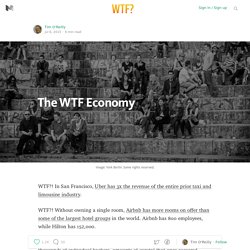
In San Francisco, Uber has 3x the revenue of the entire prior taxi and limousine industry. WTF?! 'Smart skin' senses when you've had too much UV radiation. RMIT researcher Philipp Gutruf with a transparent wearable sensor.

Photo: Joe Armao You've heard of smart televisions and smartphones. Now get ready for smart skin. Able to alert the wearer to harmful levels of UV radiation which can lead to skin cancer, the technology developed by RMIT researchers involves wearing stretchy electronic sensors which monitor UV-levels in real time. "If you are at the beach you could wear this device like a rubberband around your wrist or as a skin patch and jump into the ocean, it will be able to monitor the UV levels and tell you if you have had too much," material scientist Philipp Gutruf said.
Maria sur Twitter : "Smartphone converted into a microscope using a 3 cents lens: via @ScienceDaily #innovation. Lens turns smartphone into a microscope: Costs only 3 cents. Researchers at the University of Houston have created an optical lens that can be placed on an inexpensive smartphone to magnify images by a magnitude of 120, all for just 3 cents a lens.
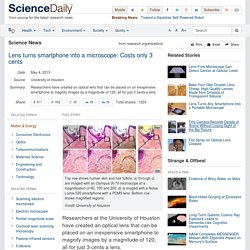
Wei-Chuan Shih, assistant professor of electrical and computer engineering at UH, said the lens can work as a microscope, and the cost and ease of using it -- it attaches directly to a smartphone camera lens, without the use of any additional device -- make it ideal for use with younger students in the classroom. It also could have clinical applications, allowing small or isolated clinics to share images with specialists located elsewhere, he said.
In a paper published in the Journal of Biomedical Optics, Shih and three graduate students describe how they produced the lenses and examine the image quality. The lens is made of polydimethylsiloxane (PDMS), a polymer with the consistency of honey, dropped precisely on a preheated surface to cure. "I put it on my phone, and it turns out it works," he said. UN Development sur Twitter : "A snapshot of @UNDPAsiaPac 2014 #innovations: Asiapac-2014-innovation-snapshot. Asia Pacific Innovations 2014 - this year that was....

Rethinking business as usual Feedback loops & iteration User-centered design thinking. All Female MIT Startup Makes Solar Powered Benches to Charge Phones. 301 Moved Permanently. Copyright’s Blind Spot: The Innovation Asymmetry. When it comes to innovation, copyright debates tend to be one-sided.
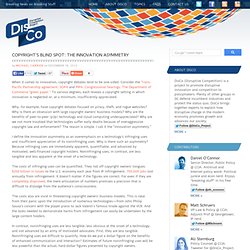
Consider the Trans-Pacific Partnership agreement. SOPA and PIPA. Congressional hearings. The Department of Commerce “green paper.” To various degrees, each reveals a copyright setting in which innovation is neglected or, at a minimum, insufficiently appreciated. Why, for example, have copyright debates focused on piracy, theft, and rogue websites? I define the innovation asymmetry as an overemphasis on a technology’s infringing uses and insufficient appreciation of its noninfringing uses.
The costs of infringing uses can be quantified. The costs also are vivid in threatening copyright owners’ business models. In contrast, noninfringing uses are less tangible, less obvious at the onset of a technology, and not advanced by an army of motivated advocates. Second, they are more fully developed over time. Finally, future noninfringing uses are less likely to be advanced by a coordinated and motivated group of advocates.
PipelineLarge.jpg (JPEG Image, 800 × 607 pixels) PowerPoint Presentation - BoozCo_The-2012-Global-Innovation-1000-Results-Summary. Research and development Research and development business studies and business english. Research and development. Technological and industrial history of Canada. The technological and industrial history of Canada encompasses the country's development in the areas of transportation, communication, energy, materials, public works, public services (health care), domestic/consumer and defense technologies.
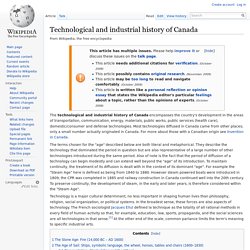
Most technologies diffused in Canada came from other places; only a small number actually originated in Canada. For more about those with a Canadian origin see Invention in Canada. The terms chosen for the "age" described below are both literal and metaphorical. Funding of science. Research funding is a term generally covering any funding for scientific research, in the areas of both "hard" science and technology and social science.
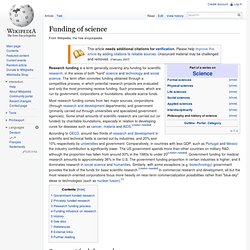
The term often connotes funding obtained through a competitive process, in which potential research projects are evaluated and only the most promising receive funding. Such processes, which are run by government, corporations or foundations, allocate scarce funds. Most research funding comes from two major sources, corporations (through research and development departments) and government (primarily carried out through universities and specialized government agencies). Some small amounts of scientific research are carried out (or funded) by charitable foundations, especially in relation to developing cures for diseases such as cancer, malaria and AIDS.
Research and development. 39924_PDF Proof.pdf. Technology life cycle. The typical life-cycle of a manufacturing process or production system from the stages of its initial conception to its culmination as either a technique or procedure of common practice or to its demise.

The Y-axis of the diagram shows the business gain to the proprietor of the technology while the X-axis traces its lifetime. The technology life-cycle (TLC) describes the commercial gain of a product through the expense of research and development phase, and the financial return during its "vital life". Some technologies, such as steel, paper or cement manufacturing, have a long lifespan (with minor variations in technology incorporated with time) whilst in other cases, such as electronic or pharmaceutical products, the lifespan may be quite short. The TLC associated with a product or technological service is different from product life-cycle (PLC) dealt with in product life-cycle management. Diffusion of innovations. The diffusion of innovations according to Rogers.

With successive groups of consumers adopting the new technology (shown in blue), its market share (yellow) will eventually reach the saturation level. In mathematics, the yellow curve is known as the logistic function. The curve is broken into sections of adopters.